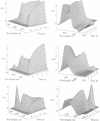Abstract
We describe simulations of absorption difference spectra in strongly coupled photosynthetic antennas. In the presence of large resonance couplings, distinctive features arise from excited-state absorption transitions between one- and two-exciton levels. We first outline the theory for the heterodimer and for the general N-pigment system, and we demonstrate the transition between the strong and weak coupling regimes. The theory is applied to Fenna-Matthews-Olson (FMO) bacteriochlorophyll a protein trimers from the green photosynthetic bacterium Prosthecochloris aestuarii and then compared with experimental low-temperature absorption difference spectra of FMO trimers from the green bacterium Chlorobium tepidum.
Full text
PDF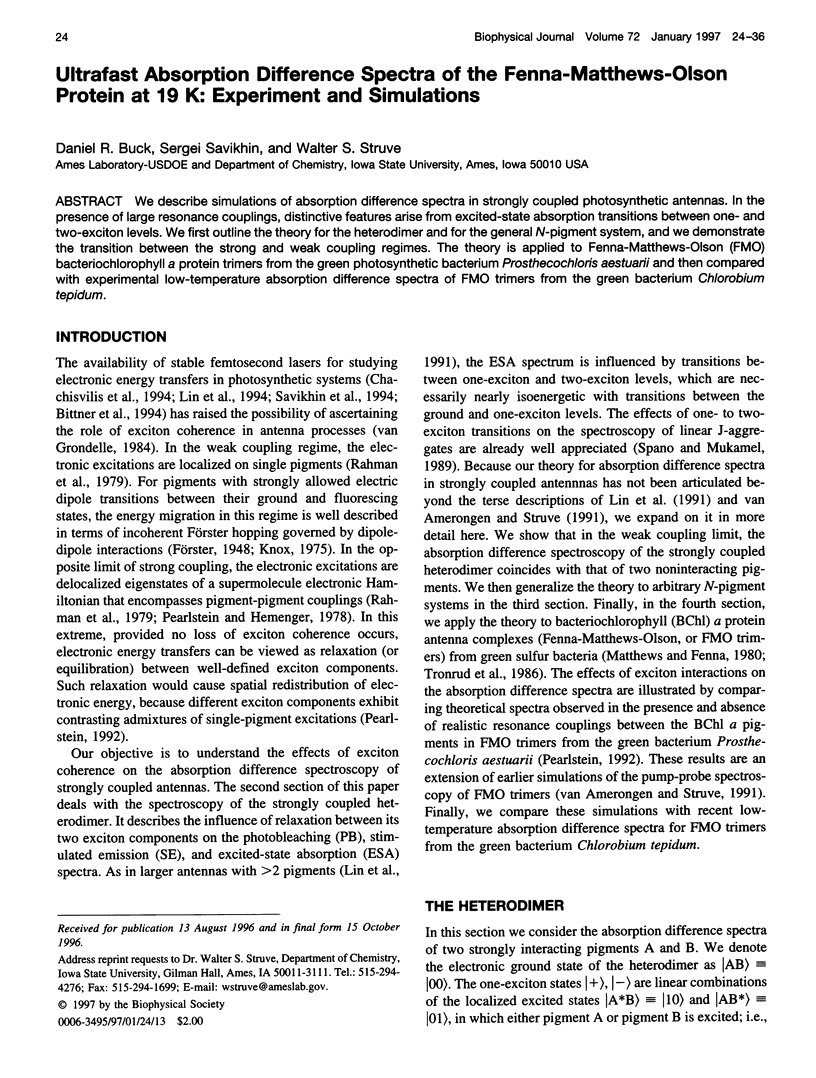
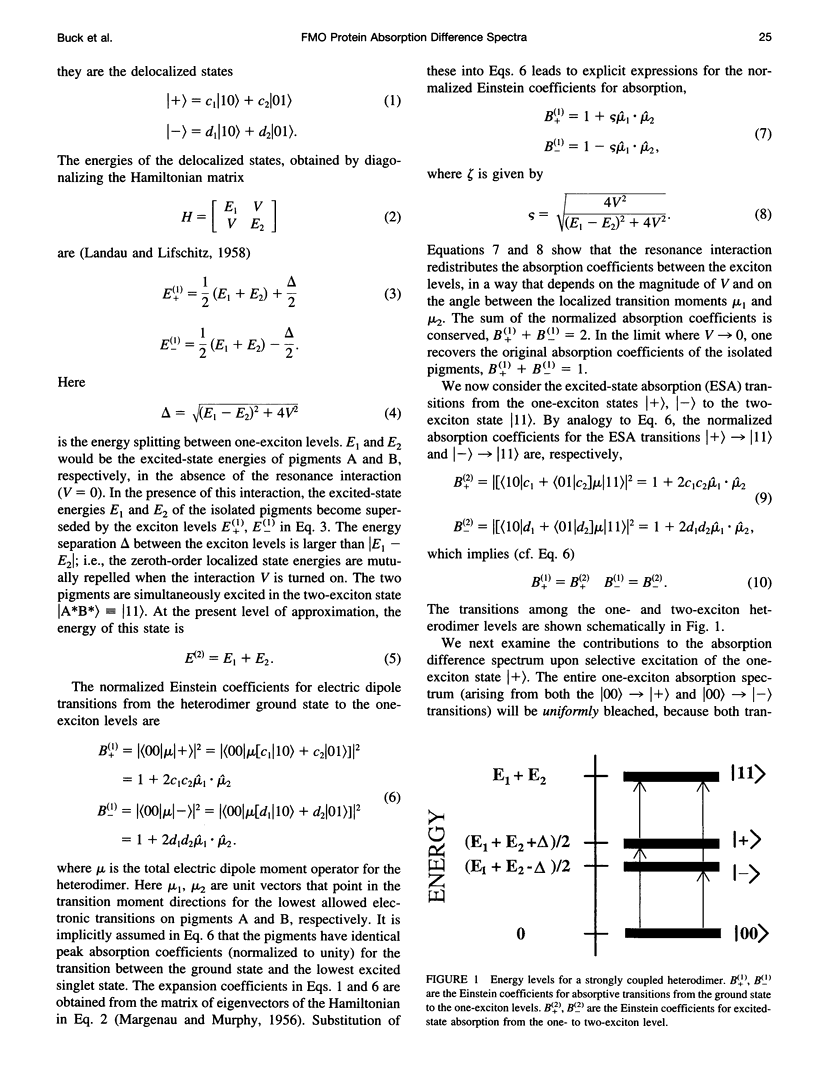
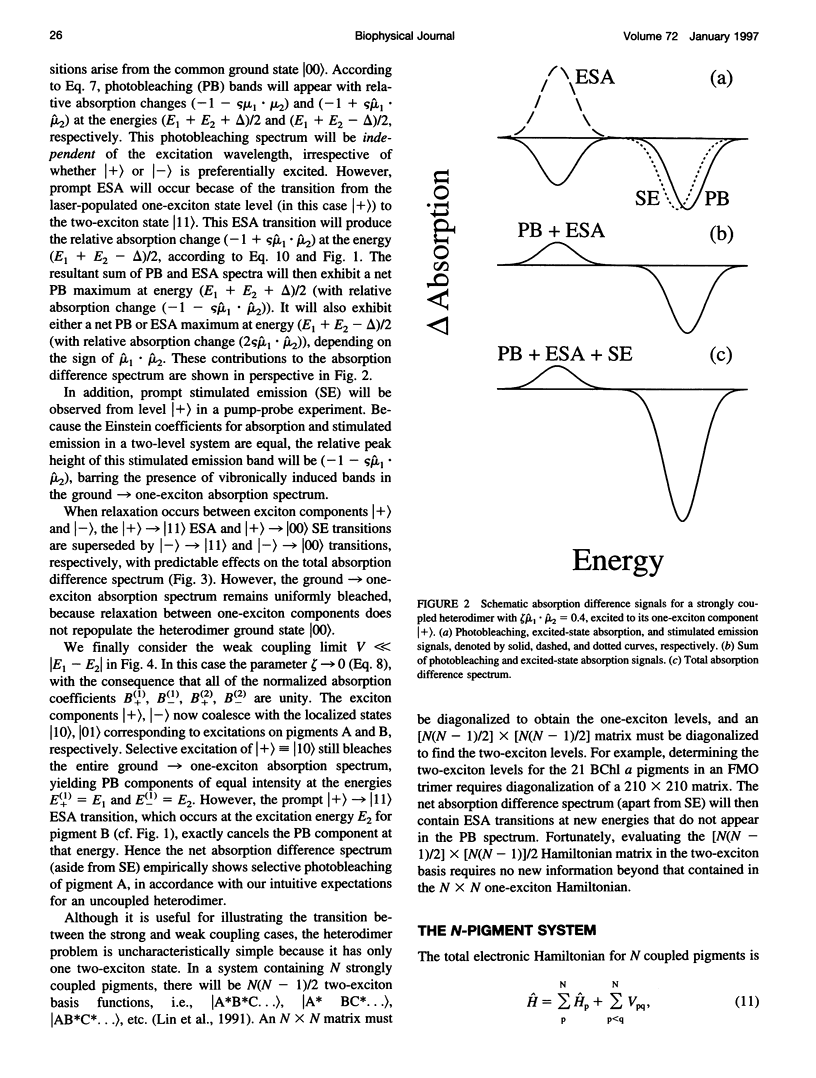

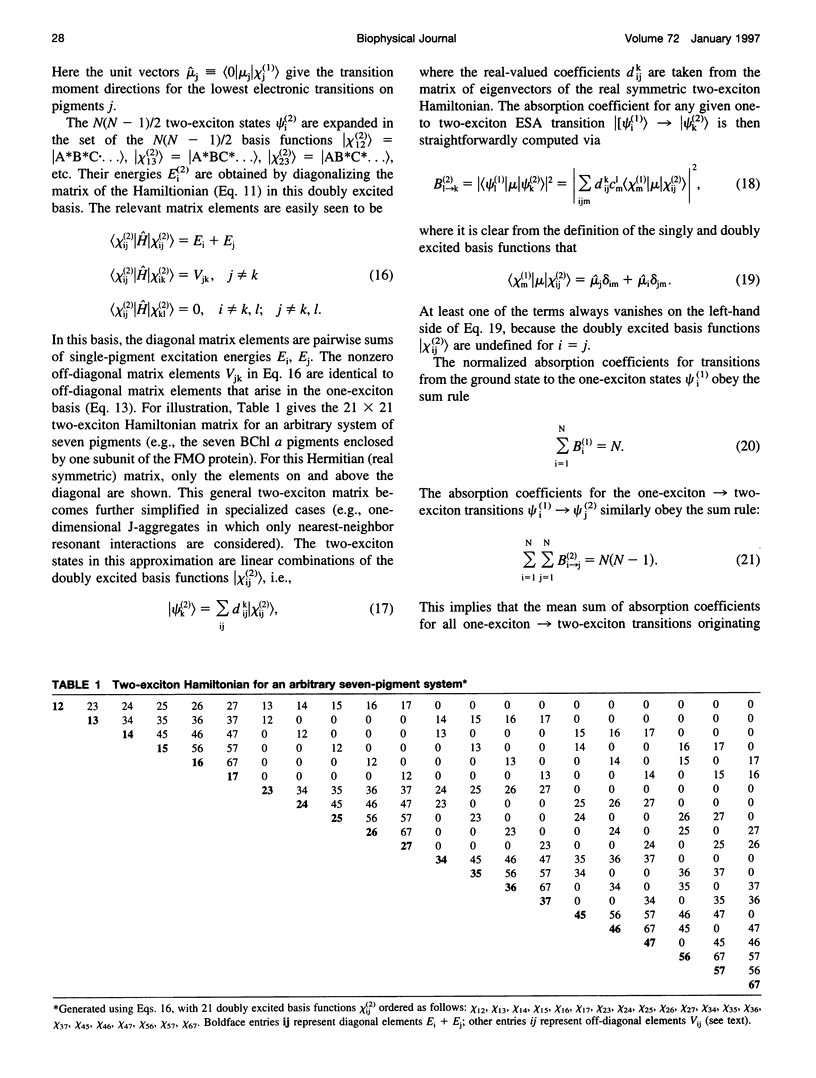
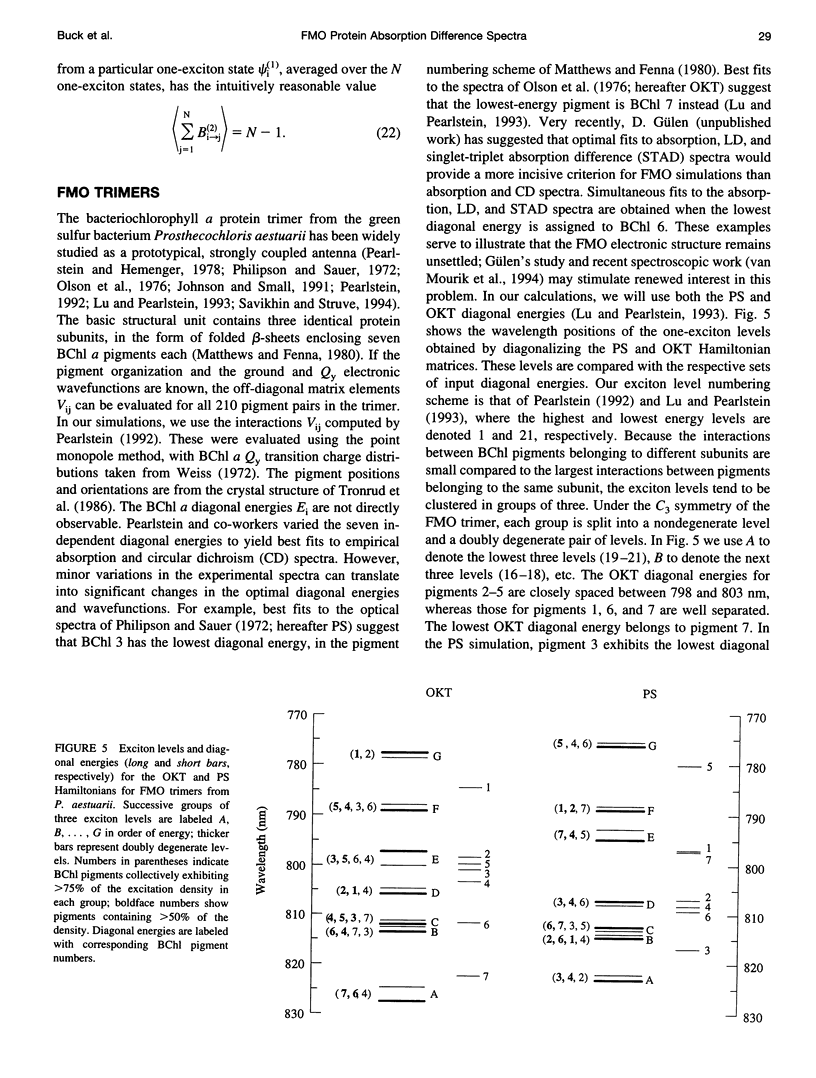

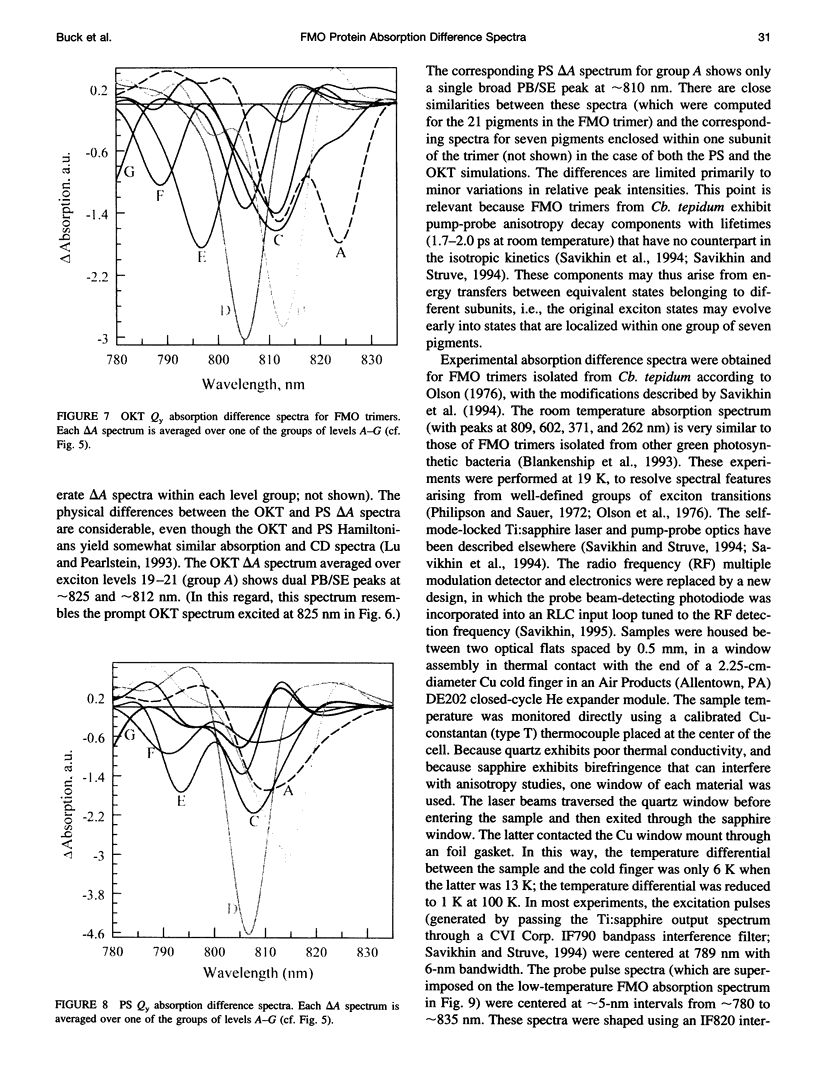


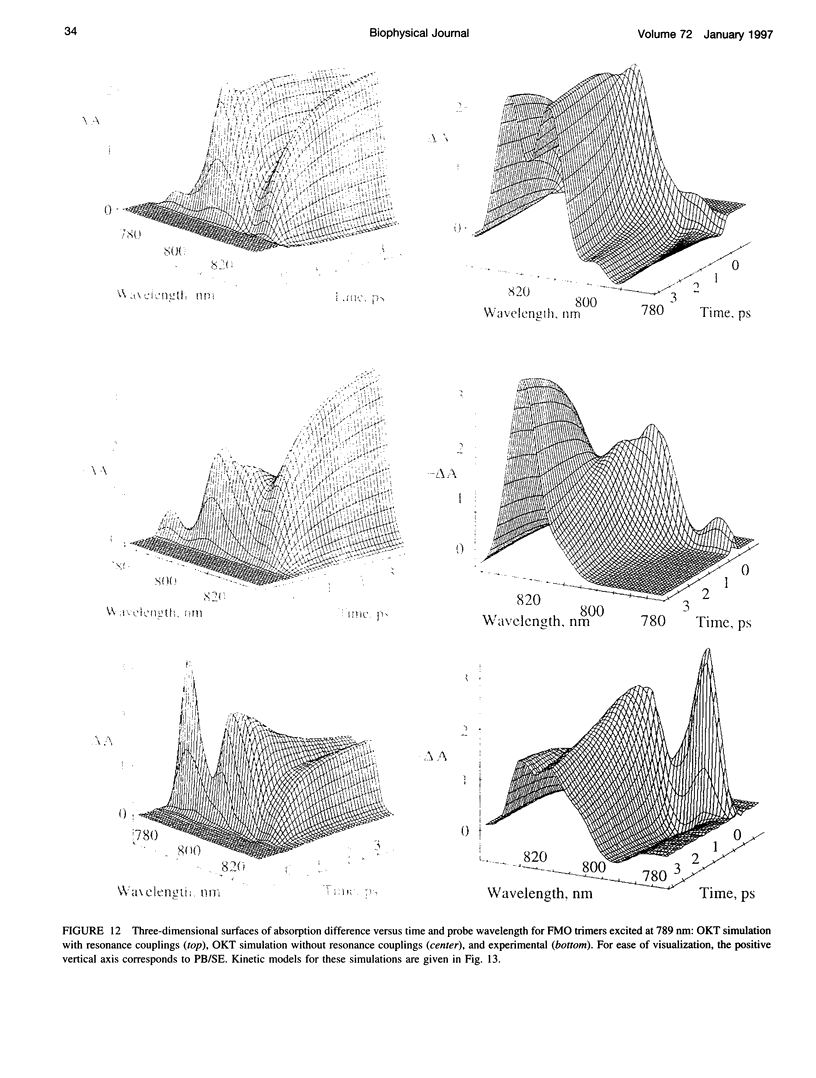
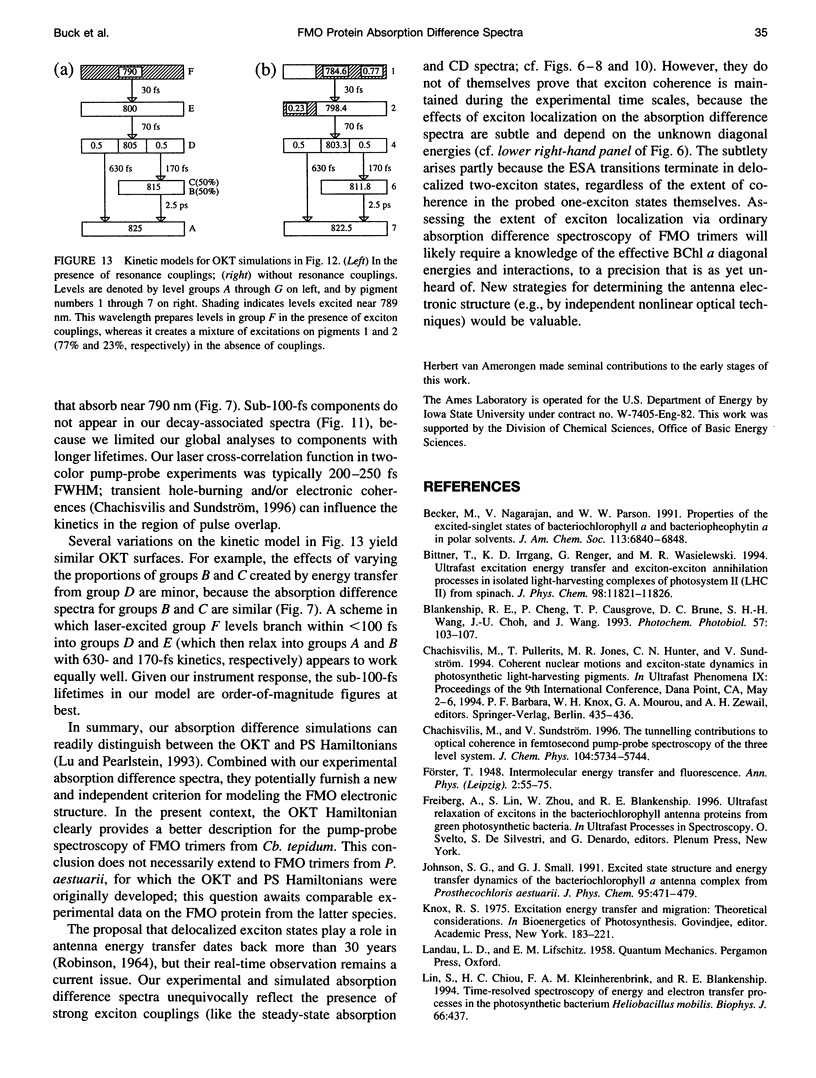
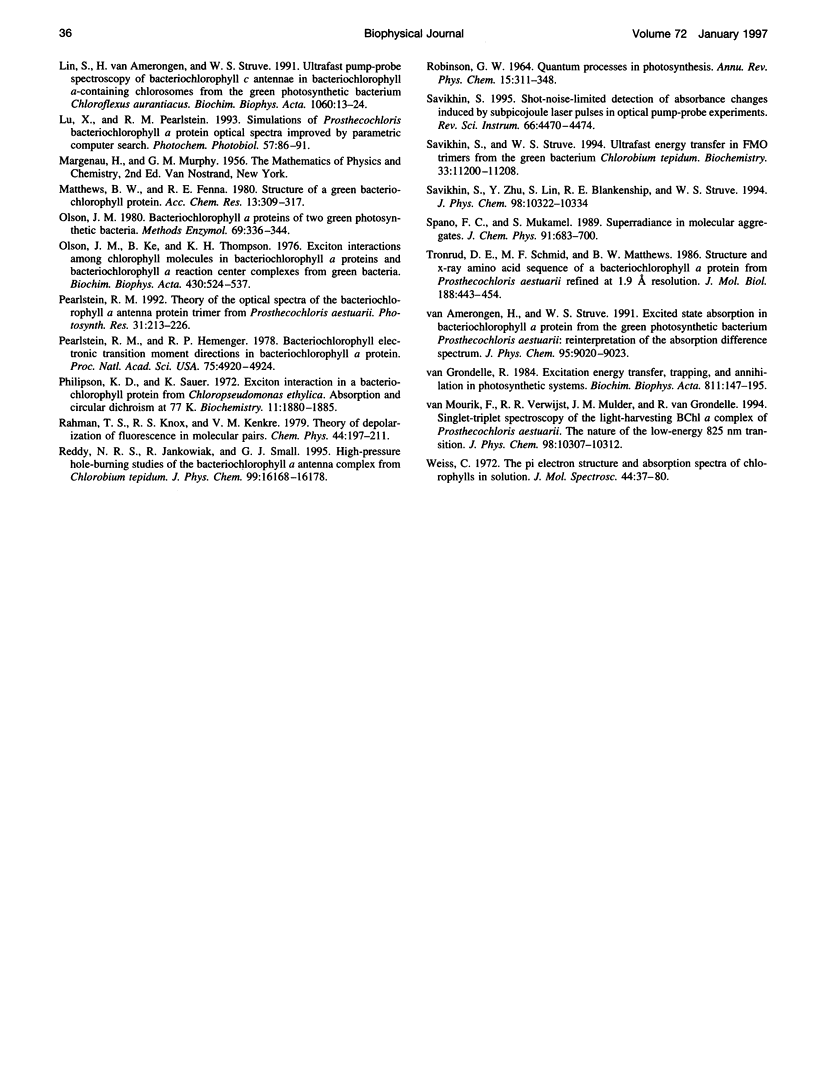
Images in this article
Selected References
These references are in PubMed. This may not be the complete list of references from this article.
- Blankenship R. E., Cheng P., Causgrove T. P., Brune D. C., Wang SH-H, Choh J-U, Wang J. Redox regulation of energy transfer efficiency in antennas of green photosynthetic bacteria. Photochem Photobiol. 1993;57(1):103–107. doi: 10.1111/j.1751-1097.1993.tb02263.x. [DOI] [PubMed] [Google Scholar]
- Lin S., Chiou H. C., Kleinherenbrink F. A., Blankenship R. E. Time-resolved spectroscopy of energy and electron transfer processes in the photosynthetic bacterium Heliobacillus mobilis. Biophys J. 1994 Feb;66(2 Pt 1):437–445. doi: 10.1016/s0006-3495(94)80794-5. [DOI] [PMC free article] [PubMed] [Google Scholar]
- Olson J. M., Ke B., Thompson K. H. Exciton interaction among chlorophyll molecules in bacteriochlorophyllaproteins and bacteriochlorophyllareaction center complexes from green bacteria. Biochim Biophys Acta. 1976 Jun 8;430(3):524–537. doi: 10.1016/0005-2728(76)90028-1. [DOI] [PubMed] [Google Scholar]
- Pearlstein R. M., Hemenger R. P. Bacteriochlorophyll electronic transition moment directions in bacteriochlorophyll a-protein. Proc Natl Acad Sci U S A. 1978 Oct;75(10):4920–4924. doi: 10.1073/pnas.75.10.4920. [DOI] [PMC free article] [PubMed] [Google Scholar]
- Philipson K. D., Sauer K. Exciton interaction in a bacteriochlorophyll--protein from Chloropseudomonas ethylica. Absorption and circular dichroism at 77 degrees K. Biochemistry. 1972 May 9;11(10):1880–1885. doi: 10.1021/bi00760a024. [DOI] [PubMed] [Google Scholar]
- Savikhin S., Struve W. S. Ultrafast energy transfer in FMO trimers from the green bacterium Chlorobium tepidum. Biochemistry. 1994 Sep 20;33(37):11200–11208. doi: 10.1021/bi00203a016. [DOI] [PubMed] [Google Scholar]
- Tronrud D. E., Schmid M. F., Matthews B. W. Structure and X-ray amino acid sequence of a bacteriochlorophyll A protein from Prosthecochloris aestuarii refined at 1.9 A resolution. J Mol Biol. 1986 Apr 5;188(3):443–454. doi: 10.1016/0022-2836(86)90167-1. [DOI] [PubMed] [Google Scholar]






